
Key Points
- Weakness in the S&P 500 is Bought Again
- Small Caps and the NASDAQ Close Below the 10-Week Moving Average
- Rates Hold Support, Will They Break Out?
- Commodities Pull Back, Led by Agriculture
- Dollar Remains Under Pressure
U.S. Equities
Similar to the prior week, the S&P 500 came under early pressure before rebounding, last week. The index tested near-term support at the rising 10-week moving average and remains well above the rising 40-week moving average. This keeps the structure of the uptrend from the March 2020 lows in place. The 14-week RSI remains below the 70 level but has not broken down in a manner that would lead us to believe that momentum has shifted in a meaningful way. Short-term support remains in the 4,100 area, while stronger support is near the 3,700 level. Resistance is in the area of the recent highs.
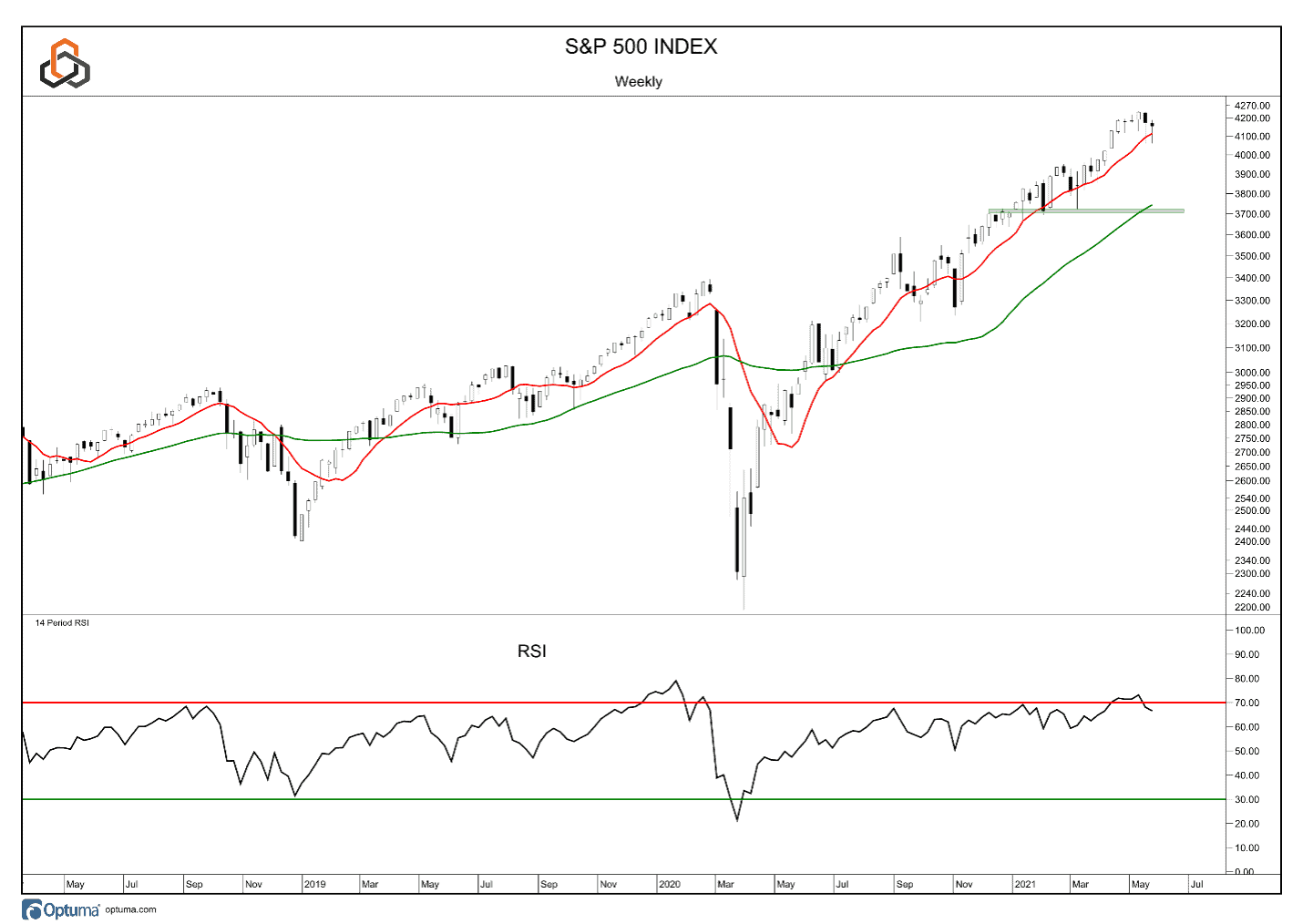
The S&P Small Cap 600 Index continues to test its own 10-week moving average. However, despite a rebound late in the week, the index finished below it by the time the final bell sounded on Friday afternoon. Near-term support remains in the 1,200 – 1,240 range, while stronger support is in the area of the 2018 highs, near 1,100. After spending much of the first quarter of 2021 in an overbought condition, the 14-week RSI is below the 70 mark. Here too, momentum has not meaningfully broken down.
Relative to the S&P 500, Small Caps are holding near-term support but remain below important resistance.
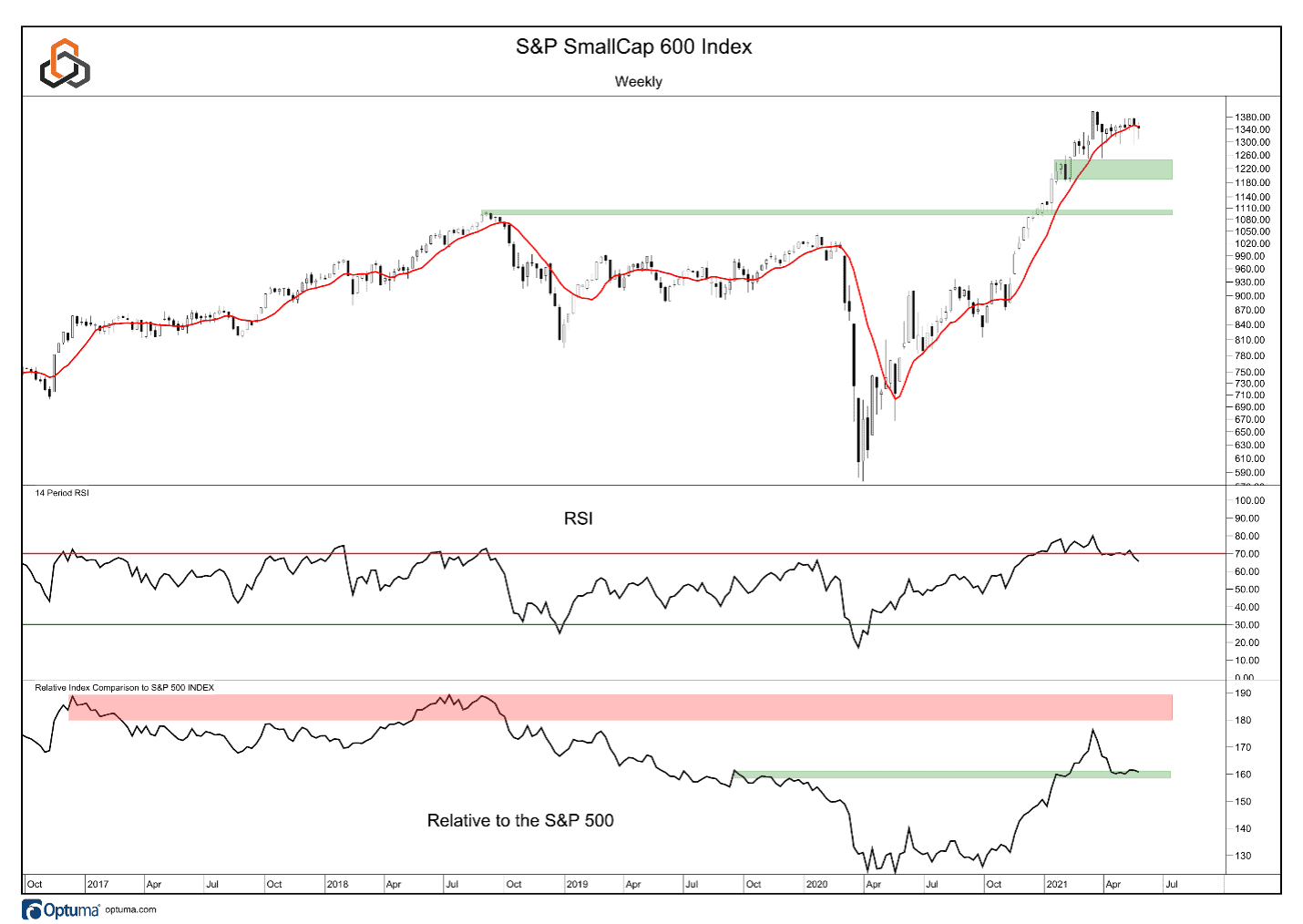
Under the surface of the Small Cap market, the four leading groups last week were Health Care, Technology, Financials, and Staples. What stands out is that all of them are in a consolidation, like the Small Cap index. Additionally, all have held support levels and are moving higher. Interestingly, it is the “defensive” Staples which are closest to trading at a new high.
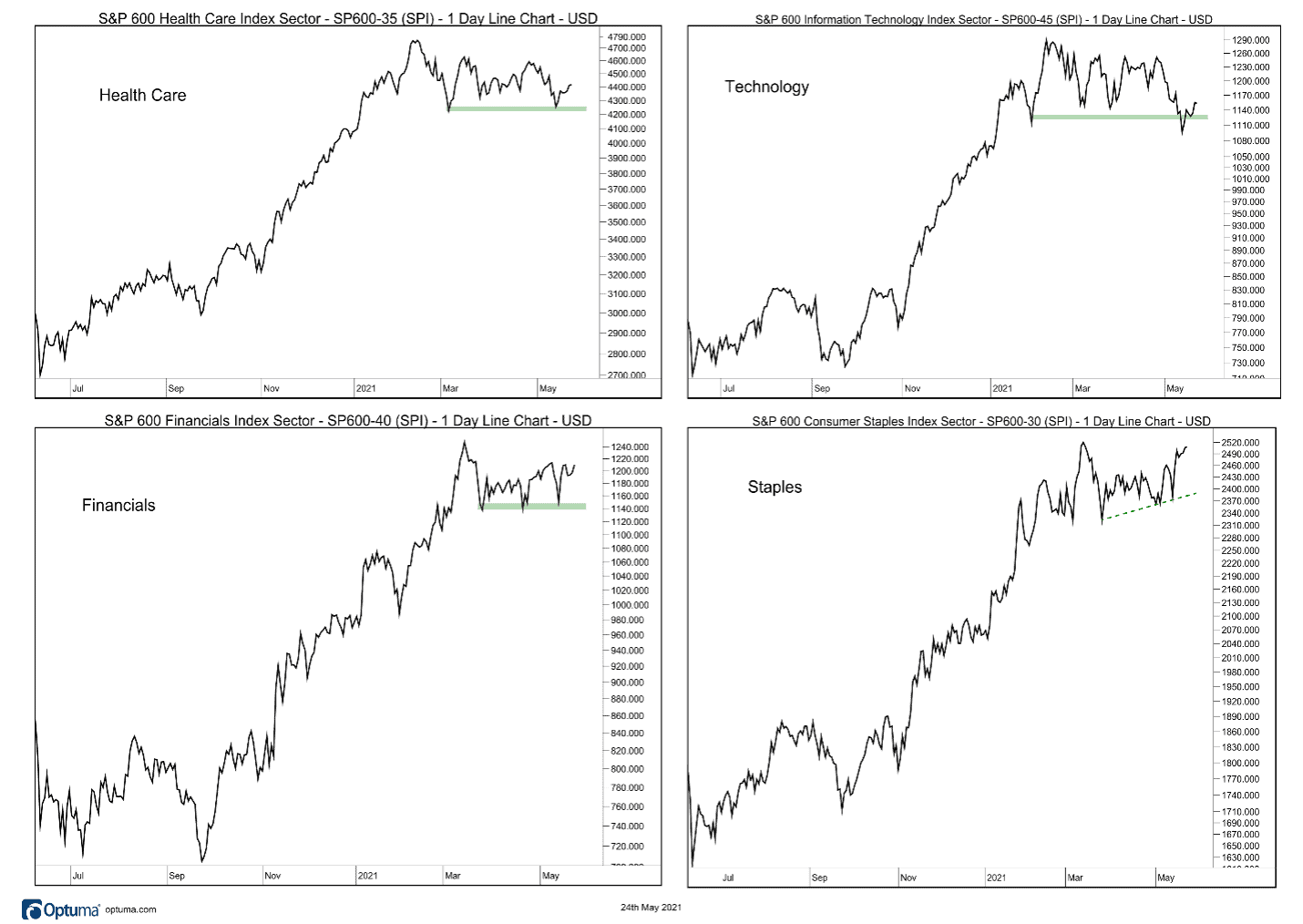
The NASDAQ Composite Index finished below the 10-week moving average for a second consecutive week. While the 14-week RSI remains in a bearish regime, we note that it did not confirm the price high which was reached in late-April. In the near-term, support is in the 12,000 – 12,400 range.
On a relative basis, the NASDAQ remains in a near-term downtrend vs. the S&P 500 after completing a topping process last week.
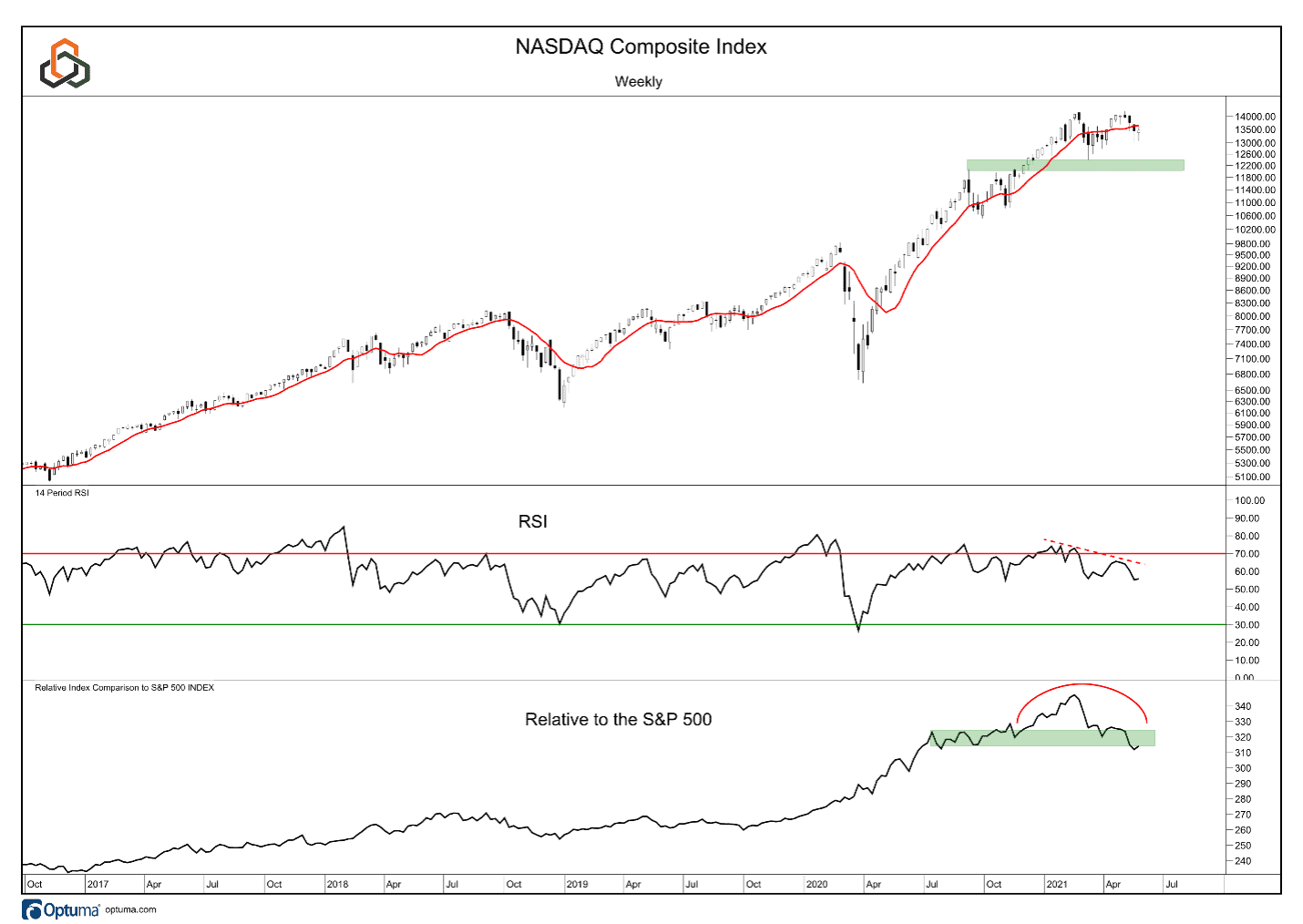
U.S. Fixed Income
The 10-year yield has, thus far, held support at the rising 50-day moving average, but remains below important resistance in the 1.90% – 2.00% range. The 14-day RSI is in a bullish regime after holding its own support level last week. These levels are key, not only for fixed income investors but also for equity investors. A break of resistance would likely point to a continuation of the reflation theme in the equity market, while a move lower in rates would be a sign of risk aversion on the part of investors.
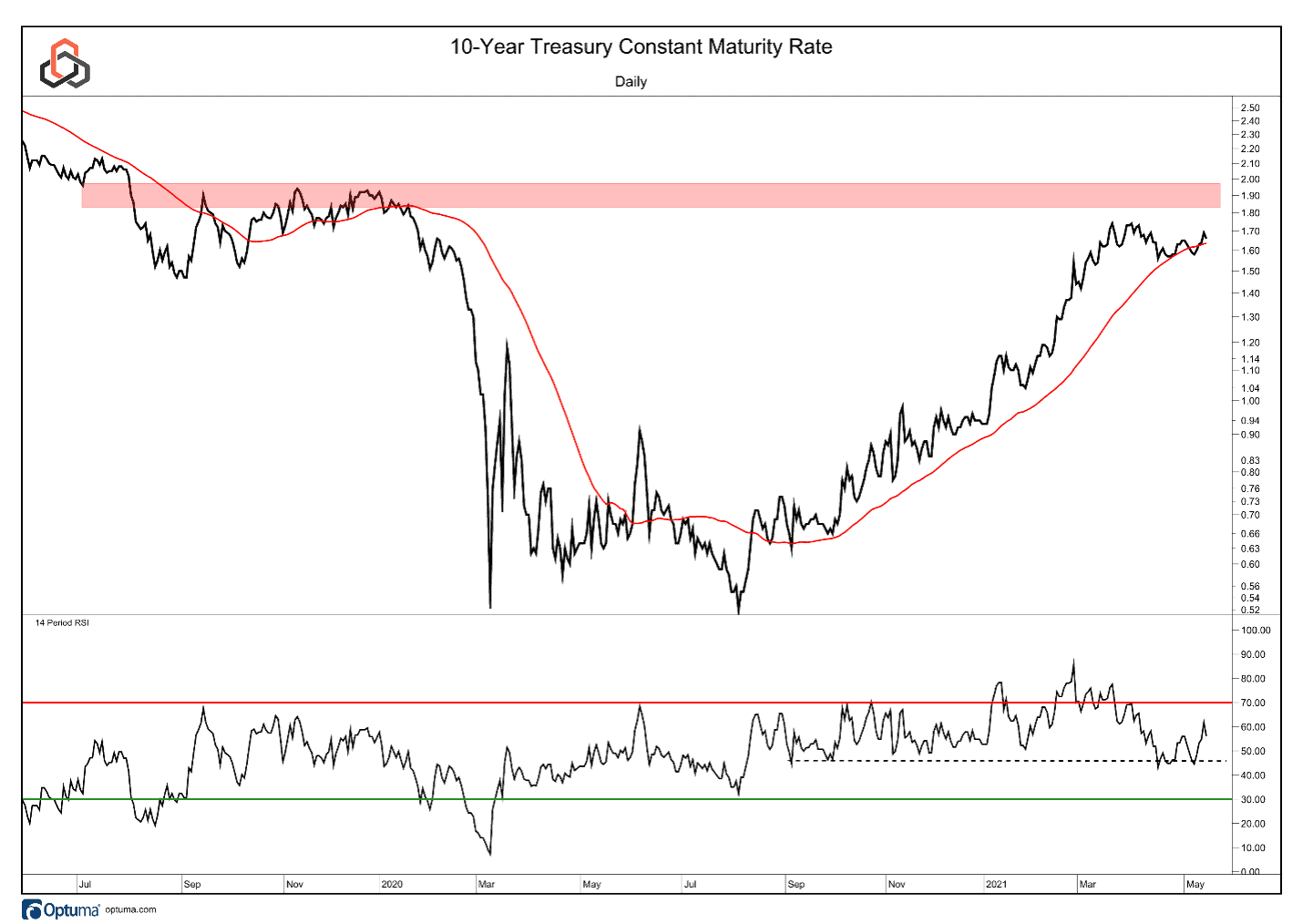
Across the treasury curve there is not much that has changed. The short end remains pinned to the floor. At the long end of the curve, rates have come in but are testing/holding support, similar to the 10-year yield mentioned above.
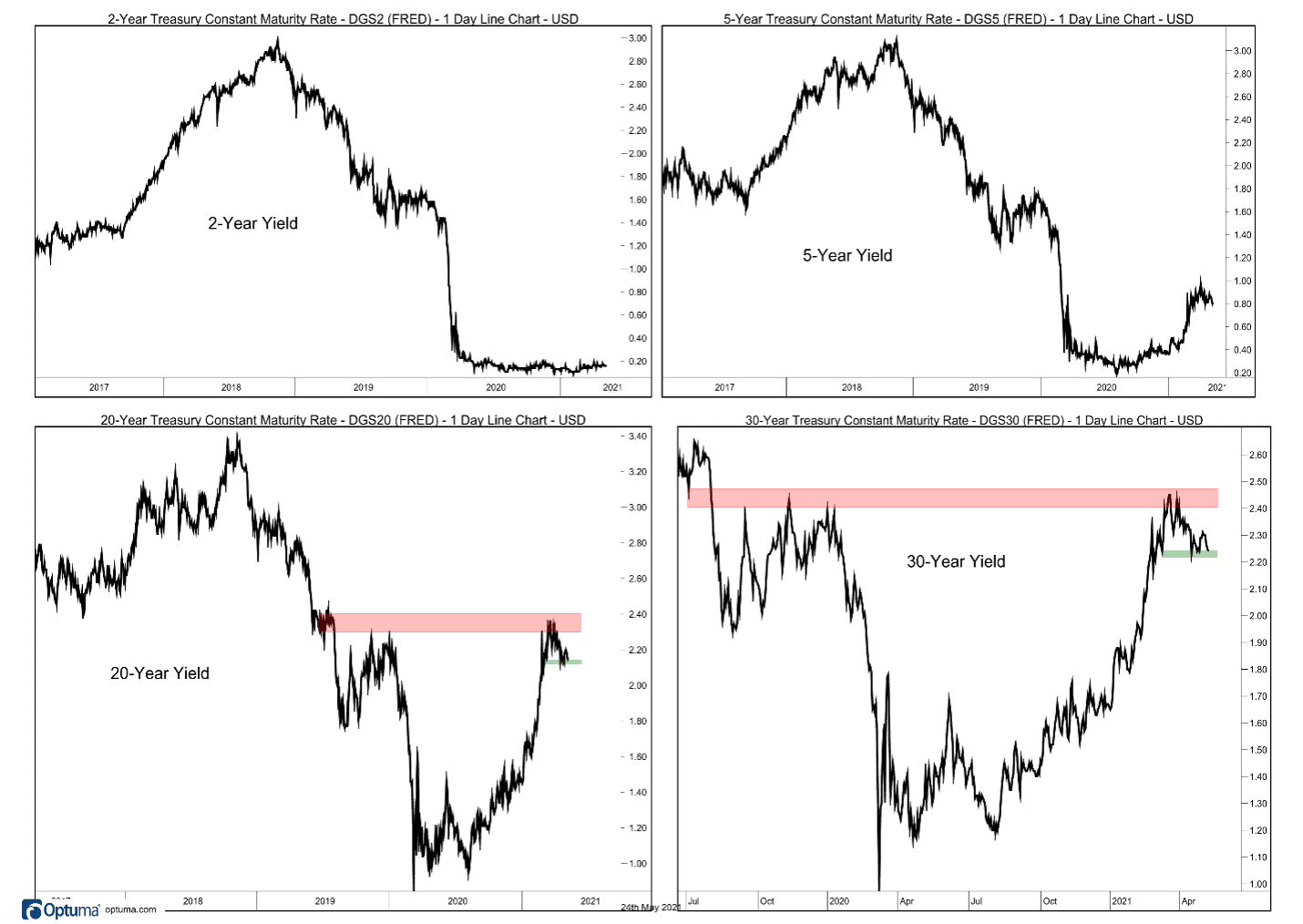
Global Equities
The Dow Jones Global World Stock Index (Excluding U.S.) closed the week above the rising 10-week moving average. Unlike the markets in the U.S., the low for the week did not undercut this measure of trend. The Global Dow remains in a consolidation, as a breakout has been elusive for the past two weeks but holding above support in the 280 – 290 range keeps the ball with the bulls. We do note that the RSI has been making lower highs.
On Friday, we discussed the possible shift taking place in the Global Dow relative to the S&P 500. There are early signs of a turn in relative performance for equities outside the U.S.
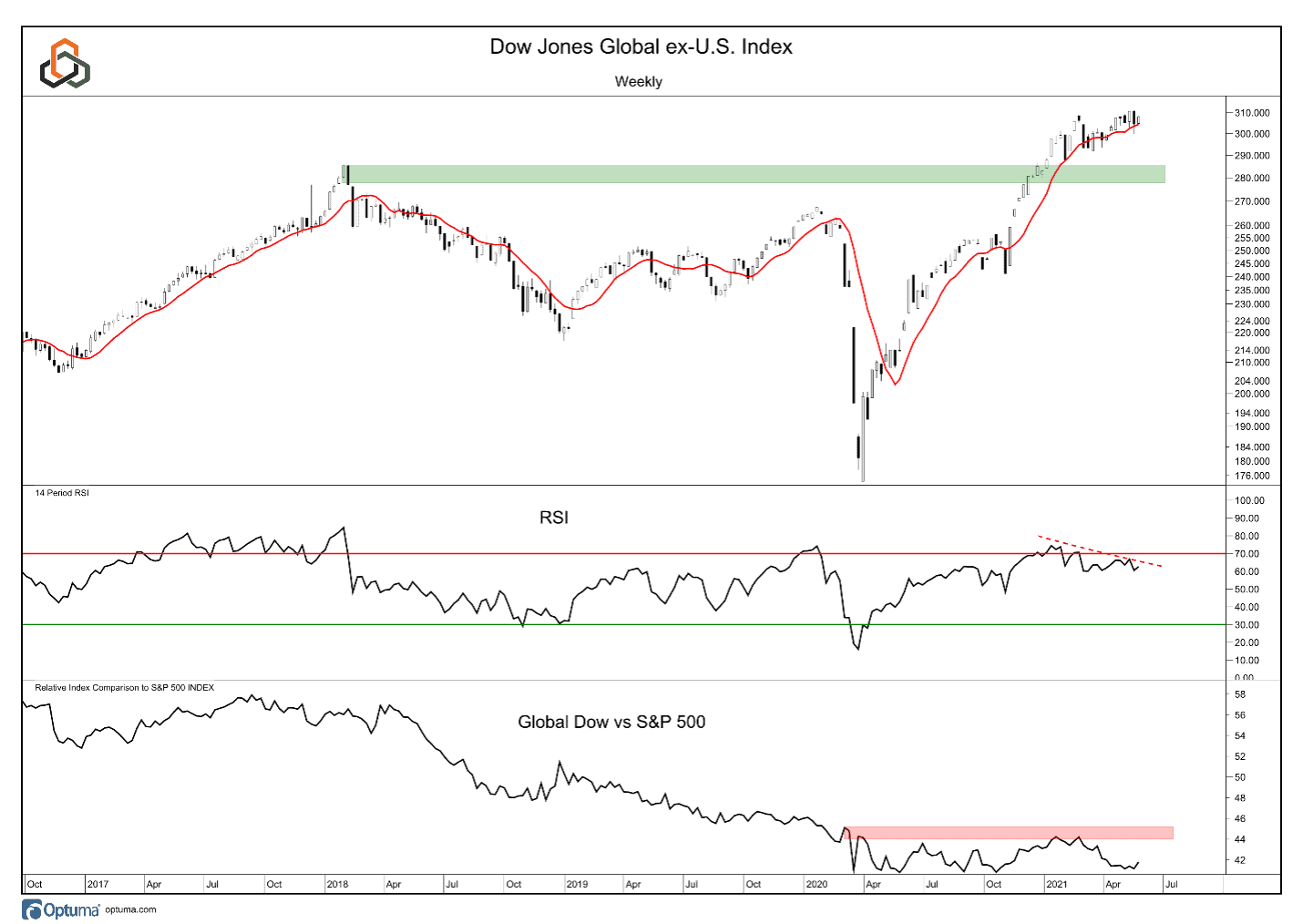
Commodities
The Bloomberg Commodity Index pulled back for a second consecutive week and has reentered the resistance zone that we have been highlighting. The index continues to trade above the rising 10-week moving average, keeping the trend to the upside. The 14-week RSI remains overbought, after logging its highest reading in the past decade recently.
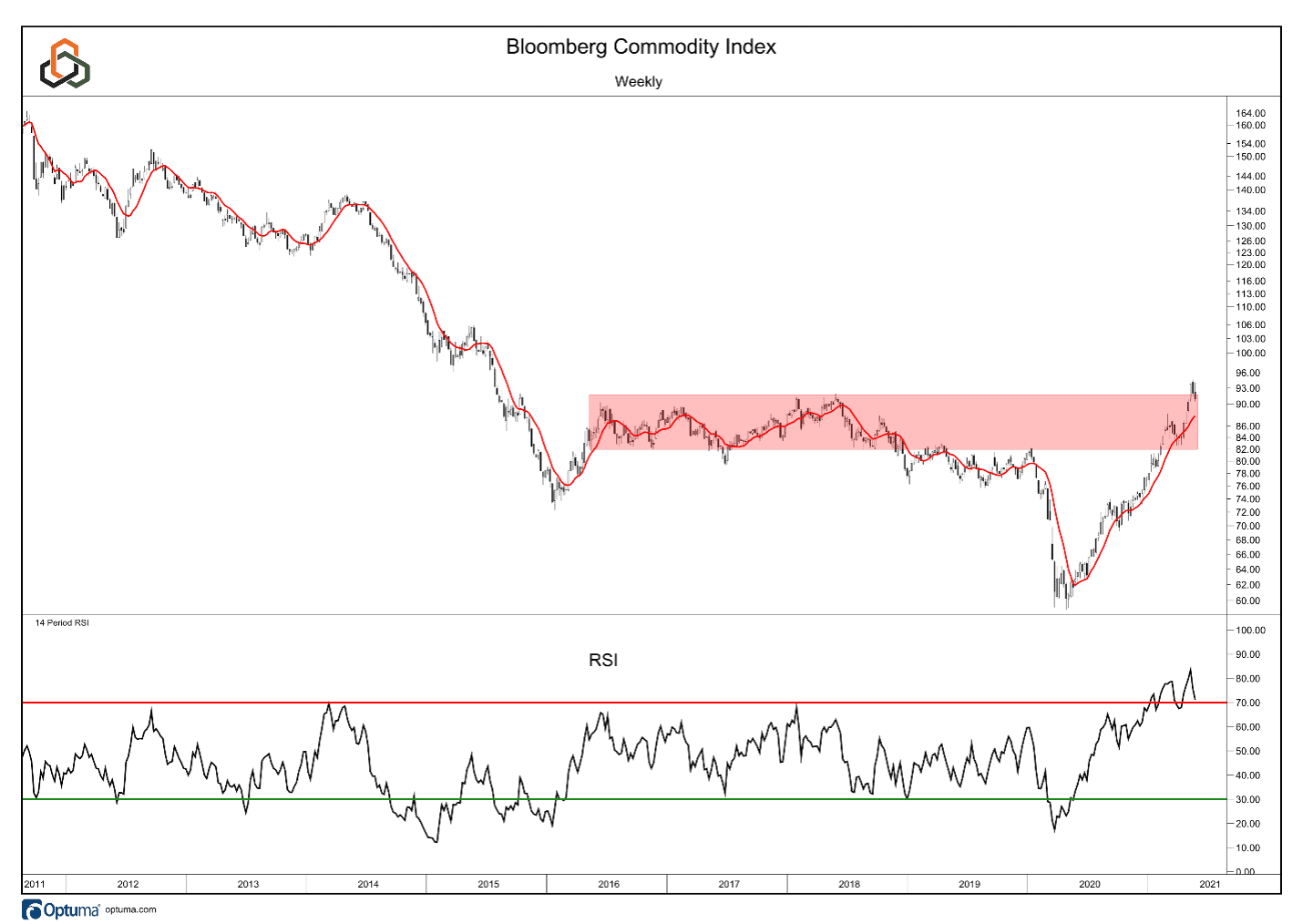
Within the commodity complex, blame for the weakness can be placed with the Agricultural commodities and the Industrial Metals, which have pulled back from record levels. Precious Metals continue to rebound but have yet to make a higher high in the process. Energy commodities are still searching for a breakout.
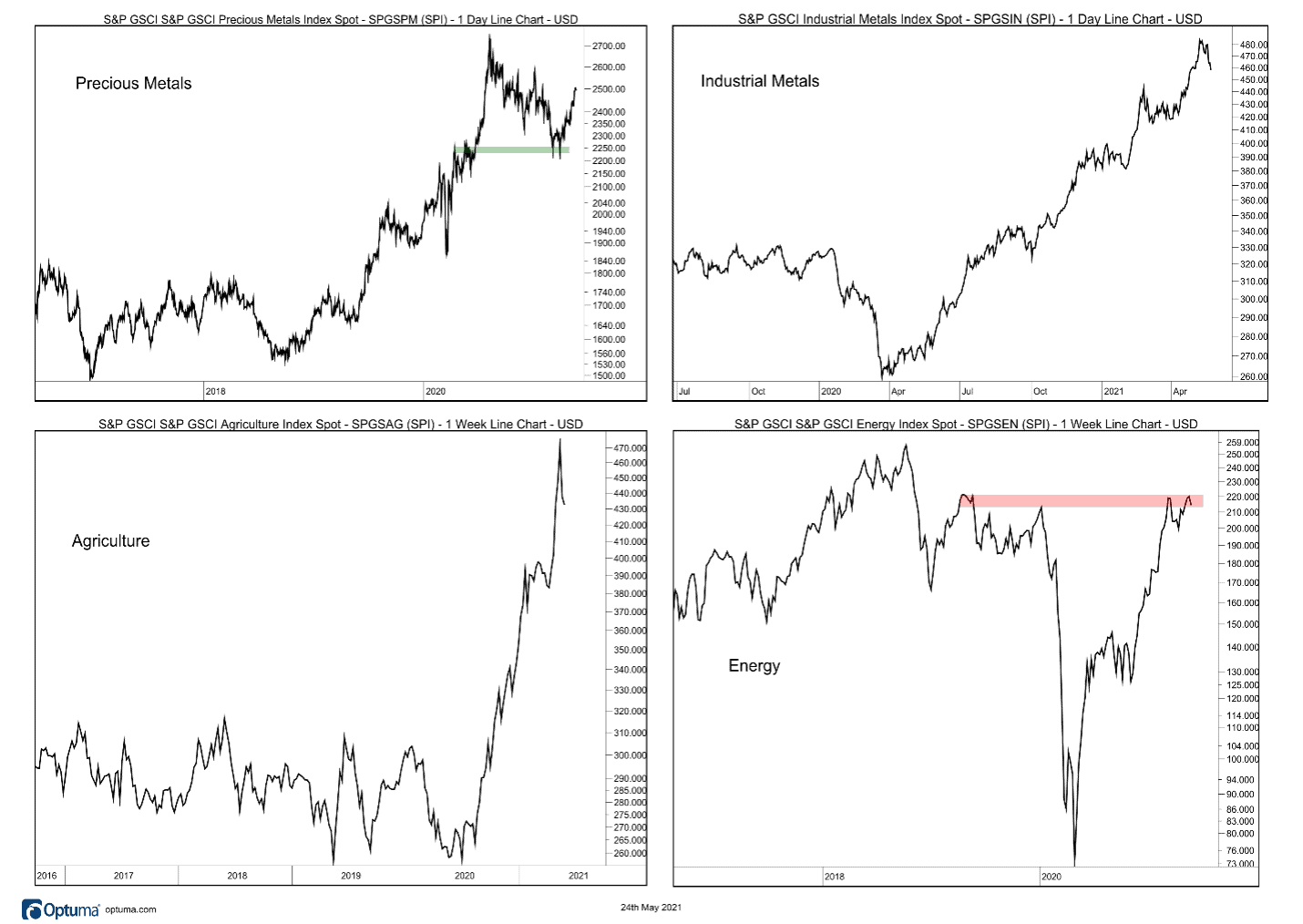
The U.S. Dollar
Our views on the U.S. Dollar are unchanged from last week: The U.S. Dollar Index remains under pressure and below the declining 10-week moving average. The index is above important support at the 2018 and 2021 lows, and we note that the RSI has failed to become oversold since testing the 30-level last August. This is a sign that downside momentum may be waning. The dollar has been weak as equities have been strong since the March 2020 lows. A reversal for the greenback would be meaningful in our view.
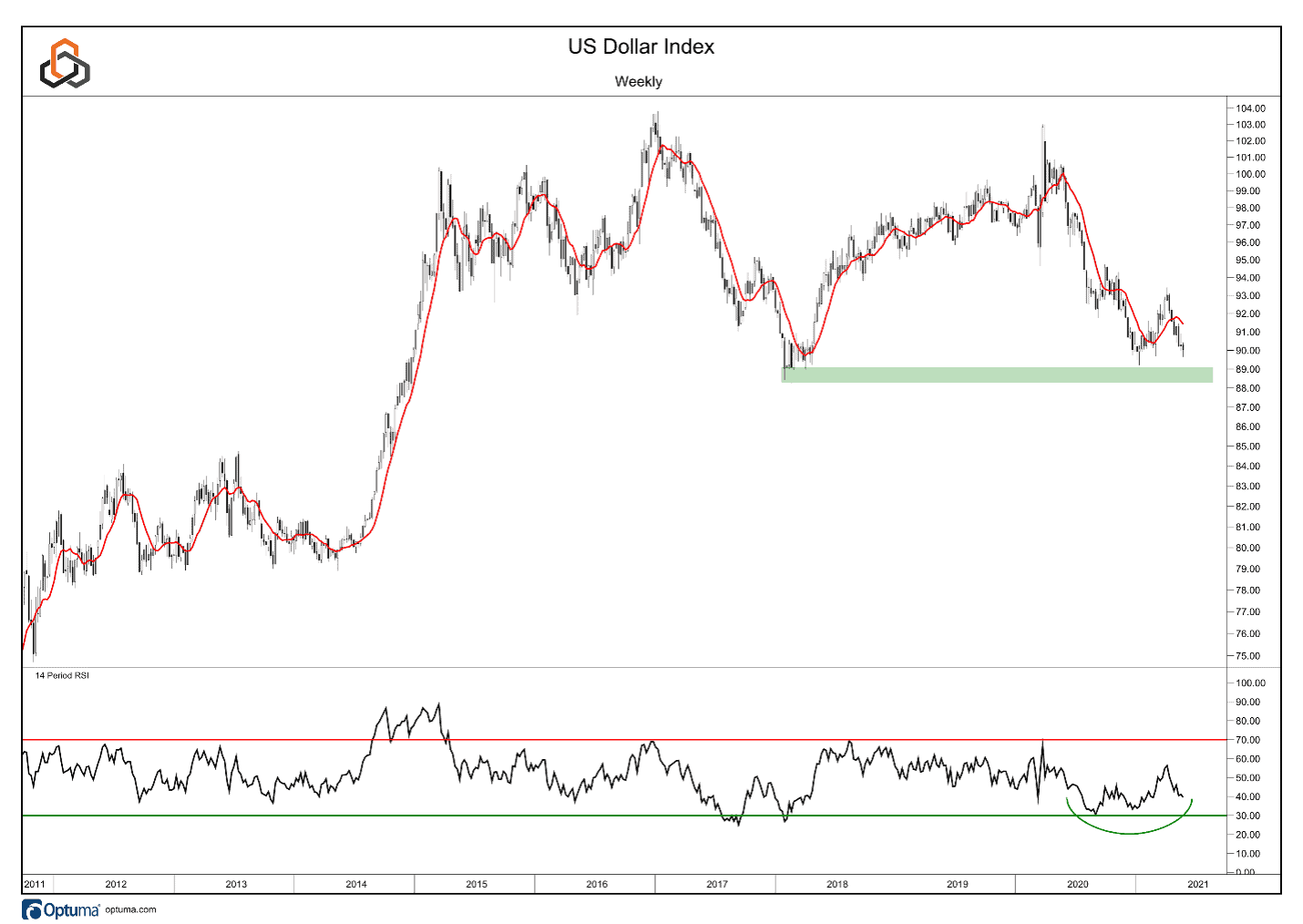
Take-Aways
A less aggressive stance on risk assets remains the prudent course. Small Caps and the NASDAQ each closed below their respective 10-week moving averages while Commodities have pulled back into the consolidation zone. At the same time, rates have stagnated in their uptrends and are testing support. Finally, while the dollar remains under pressure, we continue to make the case that downside momentum is waning.
